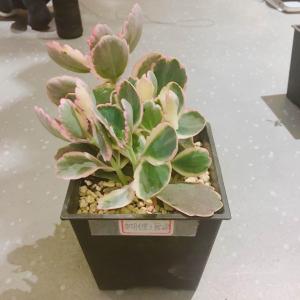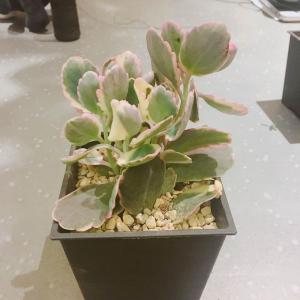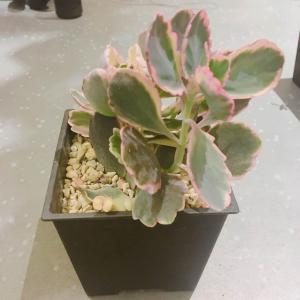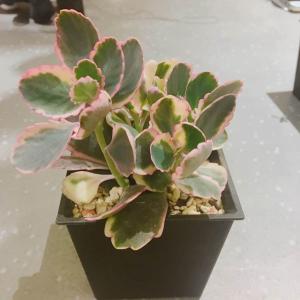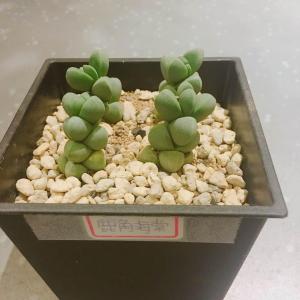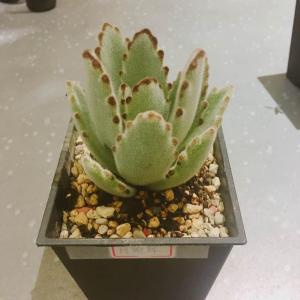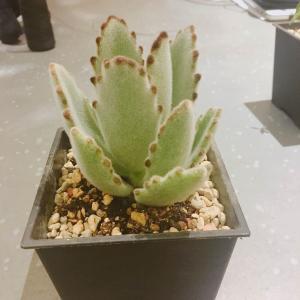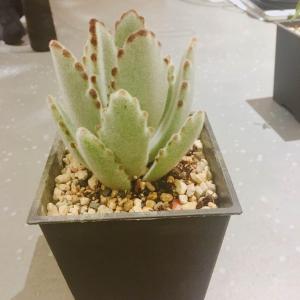文章
Miss Chen
2017年08月05日


- Nombre científico o latino: Rosa banksiae
- Nombre común o vulgar: Rosal de Banksia, Rosal de Banks
- Es un rosal trepador que presenta tallos rígidos y arqueados muy largos (3-6 m).
- Requiere un soporte para trepar.
- Hoja perenne.
- No tiene espinas.
- Las flores no tienen perfume.
- Florece en primavera formando ramilletes de flores blancas o amarillas muy pequeñas, de 2 cm de diámetro.
- Es una de las primeras en florecer cada año y lo hace en gran abundancia.
- Esta trepadora merece un lugar en todo jardín grande.
- Luz: necesita sol para florecer intensamente.
- Suelo: necesita un suelo húmedo pero bien drenado y fértil.
- Son resistentes a las condiciones costeras.
- Riego: moderado en primavera y verano.
- Tolera la sequía.
- Abono orgánico a final del invierno y abono mineral soluble en primavera.
- Se poda después de la floración para controlar su tamaño y se hace una poda regular de forma para dar vigor a la planta.
- Plagas: no sufren muchas plagas.
- Susceptible a enfermedades fúngicas, por ejemplo, Oidio.
- Multiplicación: el Rosal de Banks se reproduce por acodo simple en verano. Los esquejes arraigan fácilmente.

0
0
文章
Miss Chen
2017年08月05日


Description: This perennial wildflower produces basal leaves about ½' tall and flowering stems about ¾-2' tall. The basal leaves are 3-6" long and similarly across. Each basal leaf is deeply divided into 3-5 primary lobes that are more or less oblanceolate in shape; each primary lobe is subdivided into 2-3 secondary lobes. In addition to their lobes, the basal leaves have scattered dentate teeth along their margins. The upper blade surface of these leaves is medium to dark green and either hairless or sparsely short-hairy, while the lower blade surface is pale green and sparsely hairy, especially along the veins. The petioles of the basal leaves are about 4-8" long, light green, terete, and hairy. The flowering stems produce pairs of opposite leaves (leafy involucral bracts) in 1-2 tiers. The opposite leaves are similar to the basal leaves, except they are sessile; leaves of the second tier are also smaller in size. The stems are light green, terete, and hairy. Above each tier of opposite leaves, 1-3 flowers are produced from pedicels about 2-4" long. Each flower is 1-1½" across, consisting of 5 white petaloid sepals, a cluster of pistils, and numerous stamens with yellow anthers. The pedicels are light green, terete, and hairy.
The blooming period occurs from late spring to mid-summer for about 1-1½ months. Afterwards, each flower is replaced by a cluster of achenes. The achenes have bodies about 4-6 mm. long and a little less across, while their beaks are 2-6 mm. long; they are also flattened and slightly hairy. The root system is rhizomatous. Vegetative colonies of plants are often produced.
Cultivation: The preference is full or partial sun, moist conditions, and calcareous soil containing loam or gravelly material.
Range & Habitat: The native Meadow Anemone is occasional in northern and central Illinois, while in the southern section of the state it is rare or absent (see Distribution Map). Habitats include moist prairies, sedge meadows, openings in floodplain woodlands, woodland borders, banks of streams, and swampy areas. These habitats can be either sandy or non-sandy. Because of its attractive flowers and foliage, Meadow Anemone is cultivated occasionally in gardens.
Faunal Associations: Floral visitors include small bees (Andrenid, Halictid) that collect pollen and Syrphid flies that feed on pollen. The larvae of a fly, Dasineura anemone, form bud galls on Meadow Anemone. Another insect, Rhizoecus falcifer (Ground Mealybug), feeds on the roots. Because the foliage contains blistering agents that can irritate the gastrointestinal tract, mammalian herbivores usually avoid consumption of this plant.
Photographic Location: The Toledo Botanical Garden in Toledo, Ohio.
Comments: Meadow Anemone is similar in appearance to Thimbleweed (Anemone virginiana) and Candle Anemone (Anemone cylindrica), except that it has larger flowers, sessile opposite leaves, and achenes that are only sparsely hairy, instead of being embedded in a cottony mass of hairs. In addition to these three species, other native species of this genus in Illinois are smaller plants that bloom earlier in the year. Another common name of Anemone canadensis is Canada Anemone.

0
0
文章
Miss Chen
2017年08月05日


Description: This perennial plant consists of a rosette of basal leaves that are about 6-12" long and 2-3 mm. across. These erect to semi-erect leaves are linear, flat, and often slightly arching; they are medium green and glabrous. Each leaf has a poorly defined keel along its midvein, while its margins are smooth. Occasionally, flowering stalks emerge from the ground that are about the same height as the leaves, or slightly higher. These stalks are terete (round in cross-section), rather than flat, and they are held stiffly erect. Each stalk terminates in an inflorescence that has a sack-like covering spanning about ¾" across. This sack-like covering is white-membranous and ovoid in shape, tapering into a long beak at its apex. This covering splits open and withers away to reveal an umbel of about 6-12 pedicellate flowers or a similar number of sessile bulblets (frequently some combination of both).
The star-shaped flowers are about ½" across. Each flower has 6 tepals, 6 stamens, and a light green ovary with a style. The tepals are lanceolate to elliptic in shape and white, light pink, or pink. The bulblets are about ¼" long, ovoid in shape, and light green to pinkish red. Wild Garlic is especially likely to flower or have reddish bulblets in a sunny situation. The pedicels of the flowers are about ¾" long, medium green, glabrous, and terete. The blooming period occurs during early summer and lasts about 3-4 weeks. There is no noticeable floral scent, although the foliage exudes a typical onion scent. After the blooming period, the flowers are replaced by seed capsules; each capsule contains several small dark seeds. The root system consists of a bulb with thick fibrous roots, from which offsets may occasionally develop. This plant can also reproduce by its seeds and/or aerial bulblets.
Cultivation: The preference is full sun or partial sun, moist to mesic conditions, and a fertile loam. This plant also grows in light shade in wooded areas, but it is less likely to flower (instead, only aerial bulblets are produced). While growth is best in a fertile loam, other kinds of soil are tolerated. Periods of dry weather are also tolerated. While Wild Garlic spreads readily by means of offsets and bulblets, it often fails to produce viable seeds. This is one of the first plants to develop leaves during the spring.
Range & Habitat: Wild Garlic occurs in every county of Illinois, where it is native and quite common. Habitats include moist to mesic black soil prairies, upland and floodplain woodlands, moist meadows near rivers and woodlands, thickets, banks of streams, thinly wooded bluffs, abandoned fields, pastures, areas along railroads, roadsides, and waste areas. Wild Garlic has low fidelity to any particular habitat; it is often observed in degraded prairies and woodlands. This plant doesn't compete well against taller forbs, such as Canada Goldenrod (Solidago canadensis), preferring areas with less ground cover.
Faunal Associations: The nectar and pollen of the flowers attract the Onion Bee (Heriades carinatum), mason bees (Hoplitis spp.), Stelid bees (Stelis spp.), Halictid bees (Lasioglossum spp.), plasterer bees (Colletes spp.), masked bees (Hylaeus spp.), Syrphid flies, bee flies (Bombylius spp.), and wasps. Other insects suck plant juices, feed on bulbs, and other parts of Wild Garlic and other Allium spp. These species include the Green Stink Bug (Acrosternum hilaris), the Onion Plant Bug (Lindbergocapsus allii), larvae of the False Japanese Beetle (Strigoderma arbicola), the Onion Maggot (Delia antiqua), larvae of the Black Onion Fly (Tritoxa flava), larvae of the Onion Bulb Fly (Eumerus strigatus), and Onion Thrips (Thrips tabaci). During the early spring when little else is green, the vernal basal leaves of Wild Garlic are occasionally browsed by White-tailed Deer (personal observation). Other hoofed mammalian herbivores, such as cattle, will consume Wild Garlic along with grass and other plants. This can cause the milk of such animals to have an off-flavor. Rabbits avoid consumption of this plant because they appear to dislike the onion scent and spicy taste of the foliage. The foliage and bulbs are edible to humans, although the consumption of large amounts may be slightly toxic.
Photographic Location: The photographs were taken at Red Bison Railroad Prairie in Savoy, Illinois.
Comments: This is the most common species of native onion (Allium sp.) in Illinois. Wild Garlic (Allium canadense) can be readily distinguished from other native onions, such as the Cliff Onion (Allium stellatum) and Nodding Onion (Allium cernuum), by the presence of aerial bulblets in its inflorescence. An introduced onion in Illinois, Field Garlic (Allium vineale), also produces such bulblets. However, the leaves of Field Garlic are elliptic in cross-section with a hollow interior (at least at their bases), while Wild Garlic has leaves that are flat and solid throughout. There is a variety of the Wild Garlic (Allium canadense var. mobilense) that produces only flowers, rather than bulblets and flowers, or only bulblets. However, it is less common than the typical variety, as shown in the photographs.

0
1
文章
Dummer. ゛☀
2017年08月04日

How to Choose Hydrangeas
There are several types of hydrangea plants. Most grow as shrubs, although there is one vine, called climbing hydrangea. Mophead and lacecap types, perhaps the most common hydrangeas in zones 6 through 9, can fill many roles in the landscape. To grow hydrangeas as a hedge, choose panicle, smooth, or oakleaf hydrangea, which also offers good fall leaf color. If you are planning to grow hydrangeas in full shade, choose oakleaf hydrangea or the climbing type. If you’re planting hydrangeas in colder regions, panicle hydrangea (the type that can be grown as a tree) is the one you want, as it is the most winter-hardy.
Where to Plant Hydrangeas
The most important factors when choosing where to plant hydrangeas are light and moisture. In the South, plant them where they will receive morning sunlight and afternoon shade. With these conditions, you can grow the extremely popular French (also called bigleaf) hydrangea or panicle hydrangea. In northern regions, these same types of hydrangeas will grow in all-day sun.
The name hydrangea contains the root word “hydra” (like in hydration), which gives a clue about how much water these plants need. Make sure the spot you select is close to a water source. Know, too, that French hydrangeas tend to need the most water to thrive.

What Kind of Soil to Use for Hydrangeas
To grow hydrangeas in planting beds, focus on improving the native soil. One simple way to do that is to combine equal parts existing soil and Miracle-Gro® Garden Soil for Trees and Shrubs. In warmer regions (zones 7 and warmer), where winter tends to be mild, you can also grow hydrangeas in containers. Create just the right environment for them by filling pots with Miracle-Gro® Moisture Control® Potting Mix.
It is worth noting that mophead and lacecap hydrangeas both change flower color based on soil pH, which is a measure of how alkaline or acidic the soil is. Flowers turn pink to red in alkaline soil, and lavender to blue in acidic soil.
When to Plant Hydrangeas
When you see hydrangea plants for sale at local garden centers, that’s usually the right time for planting. This timing will vary by region. For instance, in areas with winter freezing and snow, hydrangeas should be planted in early spring or early fall (as soon as summer heat breaks). In warmer regions with mild winters, the window for planting hydrangeas is longer, from fall all the way through to early spring.

How to Plant Hydrangeas
How far apart to space plants depends on what type of hydrangea you’re growing. It’s best to check the plant tag. Note that hydrangeas planted in the shade tend to grow a little larger and spread a little more. When planting hydrangeas, dig a hole that is twice as wide as the width of the container the hydrangea came in. Place the plant in the hole so that the root ball is at the same depth as it was in the original pot, then fill in the hole with the 50-50 soil mixture described above. Water well after planting.
How to Plant Hydrangeas in Containers
To plant hydrangeas in containers, again check that plants are at the same depth as they were growing previously. How large a container to use depends on how large your hydrangea will grow. Typically, it’s safe to start with a pot 2 inches larger than the container the plant is currently in.How to Water Hydrangeas
Water deeply after planting, making sure to soak the root ball and surrounding soil. If the hydrangeas are dormant (without leaves), you may not need to water again until growth resumes.
Hydrangeas thrive in consistently moist soil. Check the soil at least once a week. When the top inch of soil is dry, it’s time to water. Once hydrangeas are established, they typically survive on rainfall, except during times of drought.How to Mulch Hydrangeas
After planting hydrangeas, apply a 2- to 3-inch-thick mulch layer around (but not on) the plants. Mulch helps keep soil moist and weeds at bay by blocking the weeds’ growth and access to sunlight. Choose whichever mulch looks best in your landscape: Scotts® bagged mulch, shredded leaves, pine straw, or some other locally available material.
How to Feed Hydrangeas
Fertilize hydrangeas in early spring as new growth appears and again just before summer. Avoid feeding hydrangeas after August, especially in regions with cold winters. A slow-release plant food works well. For best results, try Miracle-Gro® Shake ’n Feed® Flowering Trees & Shrubs Plant Food, which feeds for up to 3 months.
How to Prune Hydrangeas
When to prune hydrangeas hinges on the type of hydrangea you’re growing. Both French and oakleaf hydrangeas flower on old wood (last year’s stems), so you should prune plants right after flowering is finished. Smooth and panicle hydrangeas flower on new growth, which means you can prune stems in late winter to early spring. In general, as long as you give hydrangeas enough elbow room to spread and reach their mature size, you shouldn’t have to do too much pruning beyond cutting out dead or damaged wood.

How to Protect Hydrangeas in Winter
In colder areas, many gardeners erect a burlap screen around oakleaf and French hydrangeas in an effort to help protect flower buds that have already formed for the next year. The most important aspect of winter protection, however, is making sure the hydrangea you’re growing is hardy in your gardening zone.
How to Use Hydrangeas
Hydrangeas can fill multiple roles in the garden. Plant a hydrangea privacy hedge, or use them as a foundation planting around a home. A single hydrangea can be the focal point of a garden, and potted hydrangeas can bring beauty to a deck or entry garden. Hydrangeas also integrate well into mixed borders of shrubs and perennials, and make a natural-looking addition to a woodland setting.
Fresh hydrangea flowers are a favorite for filling vases and adorning wedding bouquets. If you want to dry hydrangea blooms, most experts suggest waiting to let flowers age and dry naturally on the plant. Harvest at the color stage you prefer.
There are several types of hydrangea plants. Most grow as shrubs, although there is one vine, called climbing hydrangea. Mophead and lacecap types, perhaps the most common hydrangeas in zones 6 through 9, can fill many roles in the landscape. To grow hydrangeas as a hedge, choose panicle, smooth, or oakleaf hydrangea, which also offers good fall leaf color. If you are planning to grow hydrangeas in full shade, choose oakleaf hydrangea or the climbing type. If you’re planting hydrangeas in colder regions, panicle hydrangea (the type that can be grown as a tree) is the one you want, as it is the most winter-hardy.
Where to Plant Hydrangeas
The most important factors when choosing where to plant hydrangeas are light and moisture. In the South, plant them where they will receive morning sunlight and afternoon shade. With these conditions, you can grow the extremely popular French (also called bigleaf) hydrangea or panicle hydrangea. In northern regions, these same types of hydrangeas will grow in all-day sun.
The name hydrangea contains the root word “hydra” (like in hydration), which gives a clue about how much water these plants need. Make sure the spot you select is close to a water source. Know, too, that French hydrangeas tend to need the most water to thrive.

What Kind of Soil to Use for Hydrangeas
To grow hydrangeas in planting beds, focus on improving the native soil. One simple way to do that is to combine equal parts existing soil and Miracle-Gro® Garden Soil for Trees and Shrubs. In warmer regions (zones 7 and warmer), where winter tends to be mild, you can also grow hydrangeas in containers. Create just the right environment for them by filling pots with Miracle-Gro® Moisture Control® Potting Mix.
It is worth noting that mophead and lacecap hydrangeas both change flower color based on soil pH, which is a measure of how alkaline or acidic the soil is. Flowers turn pink to red in alkaline soil, and lavender to blue in acidic soil.
When to Plant Hydrangeas
When you see hydrangea plants for sale at local garden centers, that’s usually the right time for planting. This timing will vary by region. For instance, in areas with winter freezing and snow, hydrangeas should be planted in early spring or early fall (as soon as summer heat breaks). In warmer regions with mild winters, the window for planting hydrangeas is longer, from fall all the way through to early spring.

How to Plant Hydrangeas
How far apart to space plants depends on what type of hydrangea you’re growing. It’s best to check the plant tag. Note that hydrangeas planted in the shade tend to grow a little larger and spread a little more. When planting hydrangeas, dig a hole that is twice as wide as the width of the container the hydrangea came in. Place the plant in the hole so that the root ball is at the same depth as it was in the original pot, then fill in the hole with the 50-50 soil mixture described above. Water well after planting.
How to Plant Hydrangeas in Containers
To plant hydrangeas in containers, again check that plants are at the same depth as they were growing previously. How large a container to use depends on how large your hydrangea will grow. Typically, it’s safe to start with a pot 2 inches larger than the container the plant is currently in.How to Water Hydrangeas
Water deeply after planting, making sure to soak the root ball and surrounding soil. If the hydrangeas are dormant (without leaves), you may not need to water again until growth resumes.
Hydrangeas thrive in consistently moist soil. Check the soil at least once a week. When the top inch of soil is dry, it’s time to water. Once hydrangeas are established, they typically survive on rainfall, except during times of drought.How to Mulch Hydrangeas
After planting hydrangeas, apply a 2- to 3-inch-thick mulch layer around (but not on) the plants. Mulch helps keep soil moist and weeds at bay by blocking the weeds’ growth and access to sunlight. Choose whichever mulch looks best in your landscape: Scotts® bagged mulch, shredded leaves, pine straw, or some other locally available material.
How to Feed Hydrangeas
Fertilize hydrangeas in early spring as new growth appears and again just before summer. Avoid feeding hydrangeas after August, especially in regions with cold winters. A slow-release plant food works well. For best results, try Miracle-Gro® Shake ’n Feed® Flowering Trees & Shrubs Plant Food, which feeds for up to 3 months.
How to Prune Hydrangeas
When to prune hydrangeas hinges on the type of hydrangea you’re growing. Both French and oakleaf hydrangeas flower on old wood (last year’s stems), so you should prune plants right after flowering is finished. Smooth and panicle hydrangeas flower on new growth, which means you can prune stems in late winter to early spring. In general, as long as you give hydrangeas enough elbow room to spread and reach their mature size, you shouldn’t have to do too much pruning beyond cutting out dead or damaged wood.

How to Protect Hydrangeas in Winter
In colder areas, many gardeners erect a burlap screen around oakleaf and French hydrangeas in an effort to help protect flower buds that have already formed for the next year. The most important aspect of winter protection, however, is making sure the hydrangea you’re growing is hardy in your gardening zone.
How to Use Hydrangeas
Hydrangeas can fill multiple roles in the garden. Plant a hydrangea privacy hedge, or use them as a foundation planting around a home. A single hydrangea can be the focal point of a garden, and potted hydrangeas can bring beauty to a deck or entry garden. Hydrangeas also integrate well into mixed borders of shrubs and perennials, and make a natural-looking addition to a woodland setting.
Fresh hydrangea flowers are a favorite for filling vases and adorning wedding bouquets. If you want to dry hydrangea blooms, most experts suggest waiting to let flowers age and dry naturally on the plant. Harvest at the color stage you prefer.
1
2
文章
Miss Chen
2017年08月03日


- Nombre científico o latino: Astrophytum asterias.
- Nombre común o vulgar: Astrofito.
- Origen: estados de Nuevo León y Tamaulipas (México) y sur de Texas.
- El género Astrophytum es originario de México. Contiene unas 5 ó 6 especies.
- El tallo de esta planta es esférico y achatado y puede alcanzar los 10 cm de diametro con una altura de aproximadamente 5 cm.
- El color es verde grisaceo o gris verdoso.
- Tiene 8 costillas divididas por pequeños surcos profundos.
- Las aréolas se disponen en el centro de las costillas. Prominentes, circulares, blancas y lanosas.
- Flores: amarillas, con el centro rojizo, de 3 cm de largo y hasta 6,5 cm de diámetro. Salen de la parte superior de la planta.
- Las plantas comienzan a ser floríferas cuando poseen un diámetro de en ocasiones, tan solo 2,5 cm.
- Es de crecimiento muy lento y, cómo las demas representantes del género, ésta especie se hibridiza fácilmente.
- Luz: sol, pero un ligero sombreado le favorece.
- Temperaturas: mínimo de 5ºC, aunque puede resistir temperaturas menores.
- Substrato: mezcla estándar añadiendo un 25% de arena gruesa. Conviene que exista caliza en el suelo.
- Riego: poco para evitar la pudrición. Menor que lo normal para cactus.
- Multiplicación: cómo la planta no emite vastagos, la multiplicación debe realizarse necesariamente a través de semillas. Las semillas de Astrophytum suelen tardar unos 5 días a germinar.

0
0
文章
Dummer. ゛☀
2017年08月01日

Family - Asclepiadaceae
Stems - Typically erect, +/-60cm tall, often purplish, weakly 4-angled, (the angles rounded), tomentoulose, from a taproot, simple, with milky sap, herbaceous.

Leaves - Opposite, decussate, short-petiolate, with more than 6 pairs per stem, variable in shape. Petioles 2-3mm long, often with a reddish tinge. Blades typically lanceolate to ovate-lanceolate or oblong, entire, (the margins wavy and minutely antrorse strigillose), to +/-9cm long, +/-4cm broad, reduced above, often ascending, pubescent above and below, acute with a slightly hardened tip. Venation anastomosing. Midrib distinctly whitish below.

Inflorescence - Typically 1-3 compound umbels near the apex of the stem. Umbels short-pedunculate, arising from the sides of the stem near the leaf nodes. Peduncles tomentose, 2-3mm long. Pedicels pilose, +/-1cm, long.

Flowers - Petals 5, light green, subulate, reflexed, +/-7mm long, 2.1mm broad, glabrous internally, sparse pubescent externally, sometimes with involute margins. Hoods reduced, not exceeding the anther column, glabrous, light green, -4mm long, +/-1mm broad. Anther column green, white at the apex, 3.5-4mm long. Horns absent. Pollinia 3mm long, long-beaked, translator deep purplish-brown. Pistils 2, 3mm long, greenish-white, glabrous.
Flowering - May - August.
Habitat - Rocky prairies and glades.
Origin - Native to U.S.
Other info. - This species is common if you explore its preferred habitat. The plant is absent in most of the north-central portions of the state though. The flowers of this species are not as showy as other members of the genus but attract many insects just the same. If you look closely at the close-up flower picture above you can see a partially exserted pollinia which was pulled free by an insect. For more about the pollination of the milkweeds, see the Asclepias syriaca page of this website.
Stems - Typically erect, +/-60cm tall, often purplish, weakly 4-angled, (the angles rounded), tomentoulose, from a taproot, simple, with milky sap, herbaceous.

Leaves - Opposite, decussate, short-petiolate, with more than 6 pairs per stem, variable in shape. Petioles 2-3mm long, often with a reddish tinge. Blades typically lanceolate to ovate-lanceolate or oblong, entire, (the margins wavy and minutely antrorse strigillose), to +/-9cm long, +/-4cm broad, reduced above, often ascending, pubescent above and below, acute with a slightly hardened tip. Venation anastomosing. Midrib distinctly whitish below.

Inflorescence - Typically 1-3 compound umbels near the apex of the stem. Umbels short-pedunculate, arising from the sides of the stem near the leaf nodes. Peduncles tomentose, 2-3mm long. Pedicels pilose, +/-1cm, long.

Flowers - Petals 5, light green, subulate, reflexed, +/-7mm long, 2.1mm broad, glabrous internally, sparse pubescent externally, sometimes with involute margins. Hoods reduced, not exceeding the anther column, glabrous, light green, -4mm long, +/-1mm broad. Anther column green, white at the apex, 3.5-4mm long. Horns absent. Pollinia 3mm long, long-beaked, translator deep purplish-brown. Pistils 2, 3mm long, greenish-white, glabrous.
Flowering - May - August.
Habitat - Rocky prairies and glades.
Origin - Native to U.S.
Other info. - This species is common if you explore its preferred habitat. The plant is absent in most of the north-central portions of the state though. The flowers of this species are not as showy as other members of the genus but attract many insects just the same. If you look closely at the close-up flower picture above you can see a partially exserted pollinia which was pulled free by an insect. For more about the pollination of the milkweeds, see the Asclepias syriaca page of this website.
0
0
文章
Dummer. ゛☀
2017年07月31日

Family - Amaryllidaceae
Stems - Flowering stems to +10cm tall, herbaceous, typically hirsute but sometimes less so, +/-1mm in diameter, from a corm.

Leaves - Basal, linear, to +15cm long, +3mm broad, pubescent.
Inflorescence - 1-6 flowers terminating the aerial stems, in a crude umbel. Pedicels to +2cm long, pubescent, sometimes subtended by small linear bracts.

Flowers - Tepals 6, spreading, entire, -1cm long, 2-3mm broad, oblong, glabrous internally. Outer tepals pubescent and greenish-yellow externally. Stamens 6, adnate at apex of ovary. Filaments glabrous, 2-3mm long. Anthers orange, 2.1mm long, sagittate. Style 1.5mm long, glabrous. Ovary inferior, 3-locular. Ovules tuberculate, keeled.

Flowering - April - May.
Habitat - Prairies, glades, bluffs, dry woods, fields.
Origin - Native to U.S.
Other info. - This little species is common in Missouri and easily seen growing in fields even though it is quite small. The small yellow flowers open in the morning and typically wilt in hot sun. The amount of pubescence on this species can be variable.
Stems - Flowering stems to +10cm tall, herbaceous, typically hirsute but sometimes less so, +/-1mm in diameter, from a corm.

Leaves - Basal, linear, to +15cm long, +3mm broad, pubescent.
Inflorescence - 1-6 flowers terminating the aerial stems, in a crude umbel. Pedicels to +2cm long, pubescent, sometimes subtended by small linear bracts.

Flowers - Tepals 6, spreading, entire, -1cm long, 2-3mm broad, oblong, glabrous internally. Outer tepals pubescent and greenish-yellow externally. Stamens 6, adnate at apex of ovary. Filaments glabrous, 2-3mm long. Anthers orange, 2.1mm long, sagittate. Style 1.5mm long, glabrous. Ovary inferior, 3-locular. Ovules tuberculate, keeled.

Flowering - April - May.
Habitat - Prairies, glades, bluffs, dry woods, fields.
Origin - Native to U.S.
Other info. - This little species is common in Missouri and easily seen growing in fields even though it is quite small. The small yellow flowers open in the morning and typically wilt in hot sun. The amount of pubescence on this species can be variable.
0
0



